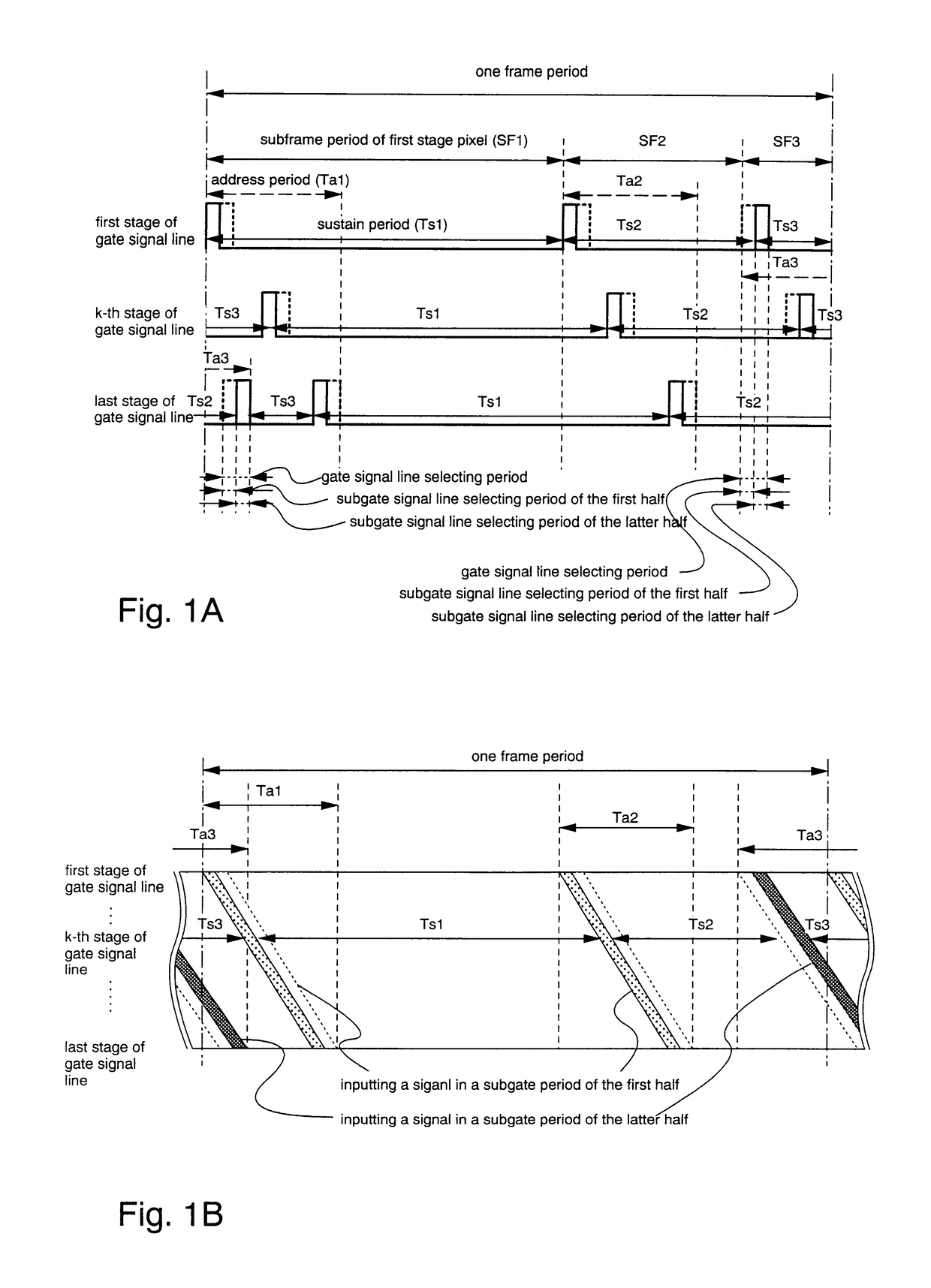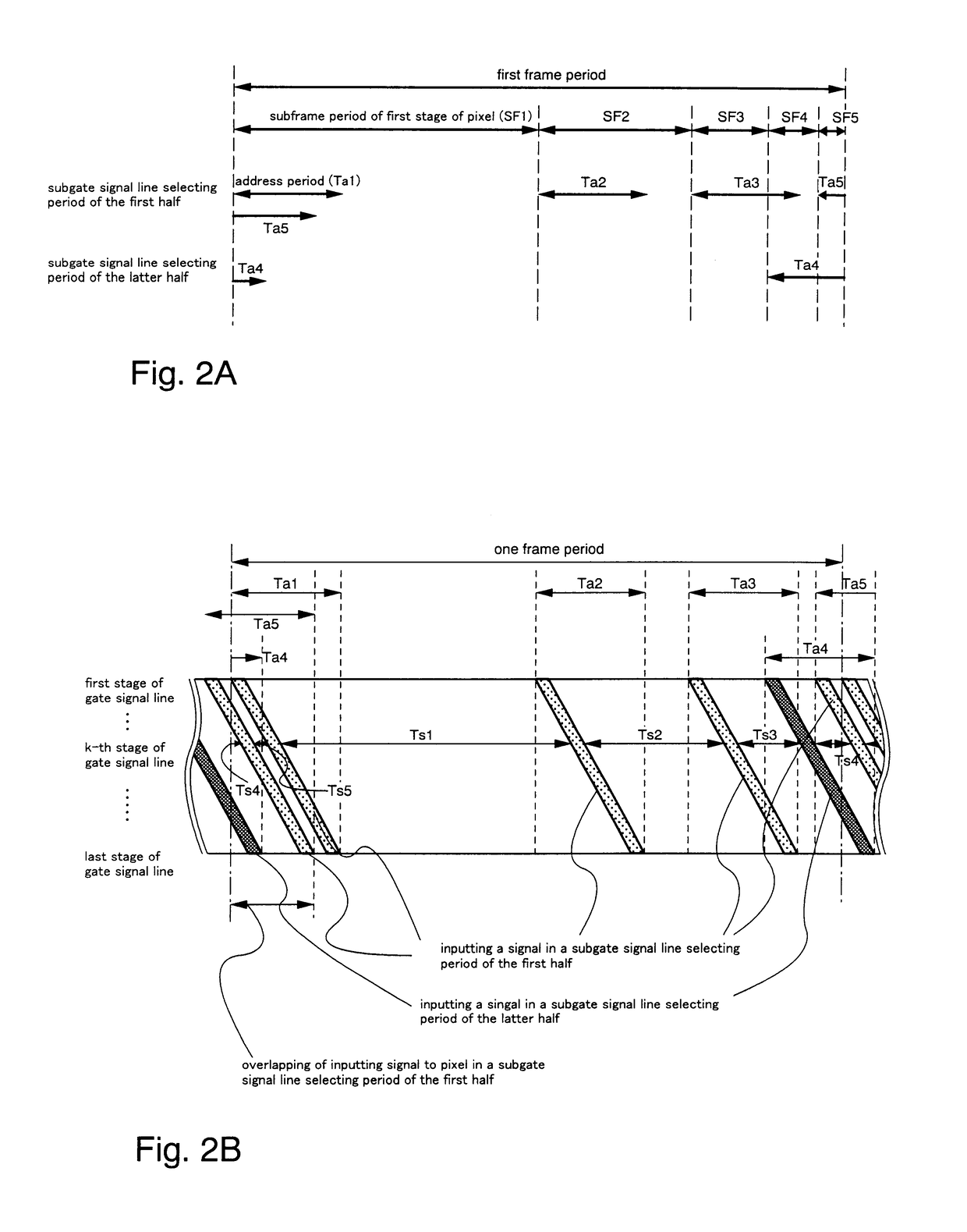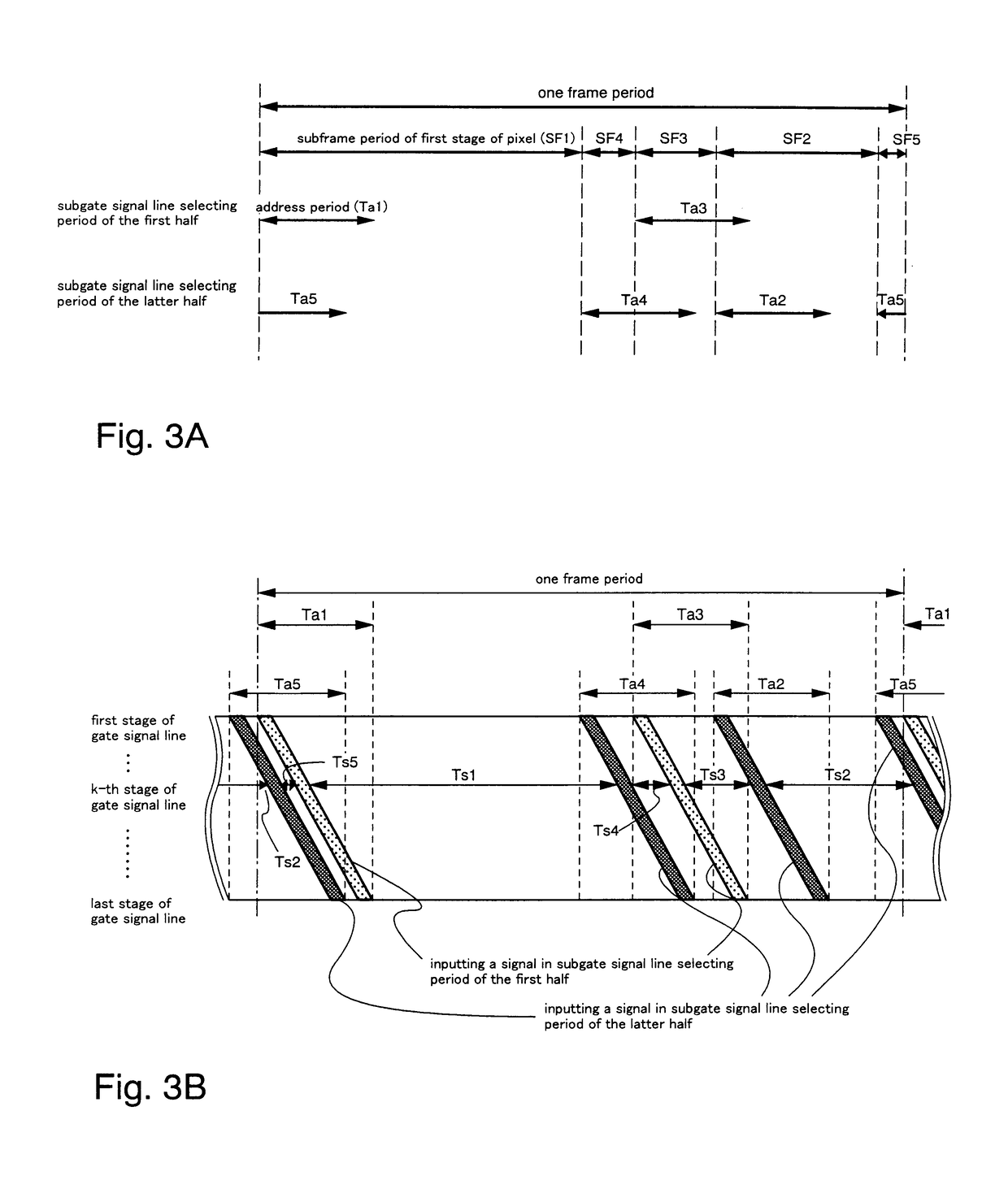Electronic device and method of driving electronic device
a technology of electronic devices and electronic devices, applied in closed circuit television systems, instruments, television systems, etc., can solve the problems of reduced duty ratio and insufficient brightness, and achieve the effect of reducing duty ratio, increasing duty ratio, and sufficient sustain (turn-on) periods
- Summary
- Abstract
- Description
- Claims
- Application Information
AI Technical Summary
Benefits of technology
Problems solved by technology
Method used
Image
Examples
embodiment 1
[0174]A case in which there are a plurality of subframe periods having sustain (turn on) periods which are shorter than address (write in) periods when dividing one frame period is given as an example and explained in Embodiment 1.
[0175]FIGS. 2A and 2B are referred to. FIGS. 2A and 2B show timing charts when dividing one frame period into five subframe periods. In this case, it can be seen that even if the gate signal line selection period is divided into the first half and the second half sub-gate signal line selection periods, and write in of a signal is performed, an address (write in) period Ta5 and an address (write in) period Ta1 of the next frame period will overlap. Normal signal write in therefore cannot be performed at this timing.
[0176]This problem can be resolved in accordance with interchanging the order of long subframe periods and short subframe periods, as one method. FIGS. 3A and 3B are referenced. FIGS. 3A and 3B show timing charts when dividing one frame period in...
embodiment 2
[0177]A method of avoiding overlap of address (write in) periods by a means which differs from that of Embodiment 1 is explained in Embodiment 2.
[0178]In FIGS. 2A and 2B, the address (write in) periods which overlap are Ta5 and Ta1 of the next frame period. This problem can be resolved by dividing the gate signal line selection periods into three sub-gate signal line selection periods and partitioning the write in of a signal into a first, a second, and a third sub-gate signal line selection period. FIGS. 4A and 4B are referred to. Signal write in is performed in Ta1, Ta2, and Ta3 in the first sub-gate signal line selection period, signal write in is performed in Ta4 in the second sub-gate signal line selection period, and signal write in is performed in Ta5 in the third sub-gate signal line selection period. As a result, signal write in is performed at a timing like that shown in FIG. 4B, and overlap of a plurality of address (write in) periods within each sub-gate signal line sele...
embodiment 3
[0180]A method of avoiding overlap of address (write in) periods by a means which differs from that of Embodiment 1 and Embodiment 2 is explained in Embodiment 3.
[0181]FIGS. 5A and 5B are referred to. The period of SF4 and SF5 themselves is short, and overlap of address (write in) periods cannot be avoided at a normal timing. Reset periods Tr4 and Tr5 are therefore formed after SF4 and SF5, respectively. A signal is input during the reset periods such that the OLED elements do not turn on. Specifically, the write in voltage may be a voltage in which electric charge does not accumulate in the storage capacitor. This signal is hereafter referred to as a reset signal. By changing the period from when the signal is written into the pixels until the reset signal is input, the lengths of the subframe periods SF4 and SF5 can be regulated, and the timing may be set such that each address (write in) period and reset period do not overlap.
[0182]A problem develops in that the OLED elements do ...
PUM
 Login to View More
Login to View More Abstract
Description
Claims
Application Information
 Login to View More
Login to View More - R&D
- Intellectual Property
- Life Sciences
- Materials
- Tech Scout
- Unparalleled Data Quality
- Higher Quality Content
- 60% Fewer Hallucinations
Browse by: Latest US Patents, China's latest patents, Technical Efficacy Thesaurus, Application Domain, Technology Topic, Popular Technical Reports.
© 2025 PatSnap. All rights reserved.Legal|Privacy policy|Modern Slavery Act Transparency Statement|Sitemap|About US| Contact US: help@patsnap.com



